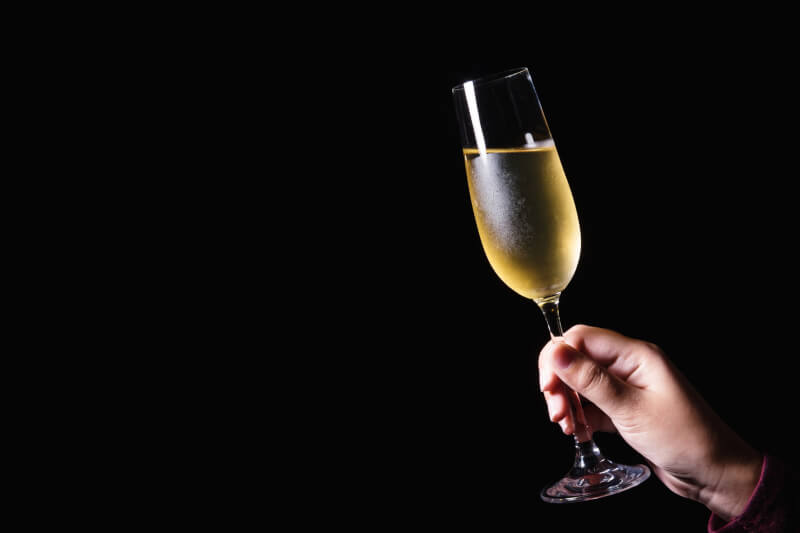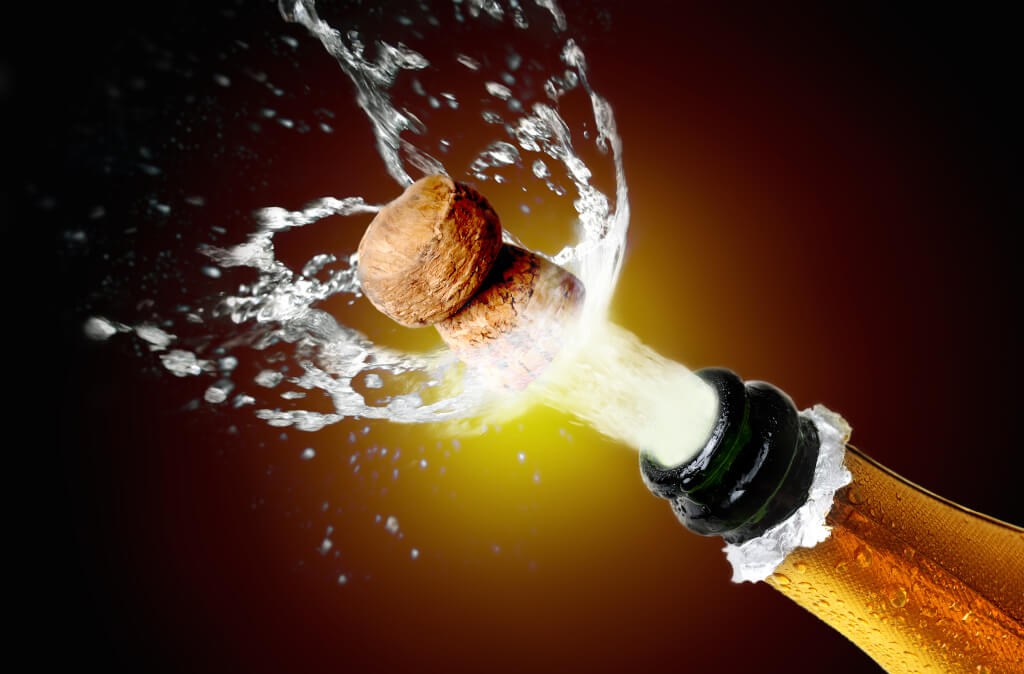Creating an Atmosphere Fit for Joyous Occasions
The effervescent burst of bubbles, the clinking of crystals, and the popping of a cork all have a way of turning even the most routine of occasions into a cause for celebration. There is something universally appealing about sparkling alcoholic beverages. They personify happiness and celebration, turning routine toasts into priceless anecdotes. These glittering treats are perfect for any occasion, from formal banquets to casual get-togethers. In this piece, we’ll pop the cork on the fascinating world of sparkling liquors, reveal the effervescent mysteries behind them, and point you in the direction of the best bottle possible. Grab your champagne glasses and get ready for a sparkling adventure!
The Fizzy Past of Sparkling Wines and Spirits
The history of sparkling liquors is rich with nuance and intriguing incidents, making for a tale as lively as the drinks themselves. The history of sparkling wine begins in the vineyards of Europe, and it is commonly believed that a Benedictine monk named Dom Pierre Pérignon invented it. Champagne, France, has played a pivotal part in the development of these celebratory beverages, regardless of the controversy surrounding its place of birth.
However, the development of sparkling liquors wasn’t limited to wines. Carbonated spirits and liqueurs emerged as distillation processes developed, adding variety to the sparkling beverage market. The introduction of sparkling vodka in the early 21st century and sparkling sake from Japan are both significant developments that put a novel spin on classic drinks. From royal coronations to New Year’s Eve parties, these sparkling treasures have been an integral part of countless historic celebrations over the years, forever marking their position in our joyful traditions.
The Science of Sparkling

Bubbles are what give sparkling liquors their allure, but have you ever given any thought to how they form? Fermentation is the key to unlocking the mystery. Naturally sparkling wines go through this process twice: first to ferment the grape juice into still wine, and again to introduce carbonation. Both Champagne and Prosecco undergo a second fermentation where yeast consumes additional sugar to produce alcohol and carbon dioxide. This can happen in a bottle or a tank. The carbon dioxide is trapped, which causes the fizzing that we enjoy so much.
However, like carbonated soft drinks, certain liqueurs get their fizz from artificial carbonation, in which carbon dioxide is injected directly into the liquid at high pressure. While mass manufacturing is possible with this approach, true connoisseurs tend to favour the subtle, persistent bubbles and complex flavours that come from natural fermentation.
A Plethora of Champagnes and Other Sparkling Spirits
Let’s take a tour of the world’s best sparkling liquors now that we know how bubbles work.
Champagne, a sparkling wine produced in the Champagne region of France, is widely regarded as the pinnacle of the category for its delicate bubbles, complex flavours, and distinguished history. The time-consuming and technically complex method of méthode champenoise is used to achieve secondary fermentation in the bottle.
Light and delicious, Prosecco comes from Italy and is a tank-method sparkling wine with larger, frothier bubbles. Cava, the Spanish equivalent of Champagne, is made in the same way but using grapes grown in Spain.
Drinks like sparkling vodka and sparkling sake bring together Japanese history with cutting-edge technology, respectively, and put an effervescent spin on the classic spirit. These liqueurs are all made using somewhat different processes, and each one has its distinct flavour and aroma. So, which bubbles do you want to investigate next?
Understanding Sparkling Wine Jargon
It sometimes feels like reading the labels on sparkling liquors is like trying to interpret a foreign language. The level of sweetness in your bottle of bubbly can be determined by its label, which may read “Brut,” “Extra Dry,” or “Demi-Sec.” A ‘Brut’ wine has very little sugar, whereas an ‘Extra Dry’ wine is, surprisingly, slightly sweeter. Demi-Sec, on the other hand, is ideal for individuals who prefer something less dry because it is sweet.
The bottle’s climate, soil, and grape variety can all be inferred from its country of origin and appellation. You can also find good bottles by keeping an eye out for quality indicators like “DOCG” in Italy or “Grand Cru” in Champagne. Keep in mind that the bottle’s label contains valuable information about its history, design, and flavour that will help you pick the perfect bottle for your event.
Food and Sparkling Wine: A Match Made in Heaven
The versatility of sparkling liquors as dining partners is highlighted by the fact that they go well with a wide variety of foods. Due to their intense acidity and fizz, they work wonderfully as palate cleansers between bites.
Champagne’s sophistication and depth complement fatty meals like foie gras and creamy cheeses thanks to the way its bubbles break up the fat. Prosecco’s mild, fruity flavour pairs nicely with the spice of Asian cuisine. Cava, with its just-right blend of crispness and substance, complements tapas and seafood paella equally well.
Try a modern twist on the classic by drinking sparkling sake with your sushi, or go for a palate-cleansing glass of sparkling vodka as an aperitif. You can improve your dining experience and learn more about the complexities of your favourite sparkling liquor by experimenting with different pairings.
How to Pour the Perfect Drink: Proper Service Etiquette

The experience of drinking sparkling liquors is as important as the liquor itself, thus it’s important to know how to serve them correctly. You shouldn’t feel nervous when opening a bottle of champagne. The secret is to keep a solid grasp on the cork while you spin the bottle, releasing the cork with a soft sigh rather than a spectacular pop.
To keep the fizz in your drink, pour at an angle and down the side of the glass. The typical serving size is around 5 ounces, which fills the glass somewhat less than halfway. In terms of stemware, the conventional flute is created to highlight the soaring bubbles of the alcoholic beverage. However, the aromatic expression of more complex sparklers can be improved by using a broader glass, such as a tulip shape.
The serving temperature also plays a role in how enjoyable a beverage is. Sparkling wines taste best when served very cold, between 4 and 8 degrees Celsius, where they retain their fresh flavour and vivid bubbles.
The World of Sparkling Cocktails: A Tasting Tour
The effervescent liquors’ great fit for cocktails only adds to their adaptability. The fizz is a fun addition to mixed drinks and makes the occasion feel more celebratory.
The Mimosa (orange juice and Champagne in equal parts), the Bellini (Prosecco and white peach puree), and the Kir Royale (Champagne and a splash of crème de cassis) are all classic cocktails that showcase the complementary flavours of sparkling wines and other ingredients. These recipes are great for DIY bartending because of how easy they are to follow. These sparkling cocktails will be the highlight of any breakfast, dinner party, or well-deserved reward. With this information in hand, you can now enjoy the many varieties of sparkling liquors.
An Afterthought on the Flight of Bubbles
Let’s review the highlights as we toast the end of our journey through the world of sparkling liquors. We learned about the interesting background of these fizzy drinks, investigated the processes that go into making them, and investigated the wide variety of drinks that can be found in different parts of the world.
We cracked the secret of wine bottle descriptions, learned how to combine these effervescent treats with a diversity of cuisines, and uncovered the protocol for optimum pleasure. At last, we set off on an artistic adventure with sparkling cocktails, developing our versions of well-known beverages using only basic ingredients and techniques.
Toast Your Newfound Appreciation With Sparkling Wine

I hope that your admiration for these effervescent drinks has grown as a result of this tour of the sparkling spirits globe. In addition to being symbols of delight, they are a tribute to centuries of history, labor-intensive manufacturing processes, and the satisfaction of eating foods with exceptional flavour.
When you open a bottle of champagne next time, think of all the work that went into getting it from the vineyard or distillery to your glass. Here’s to toasting the great and small victories in life with a renewed appreciation for the bubbly beverage in your hand.




